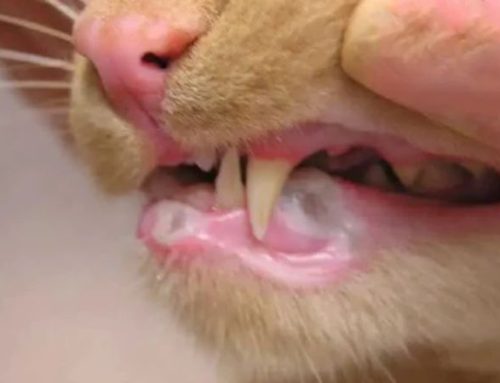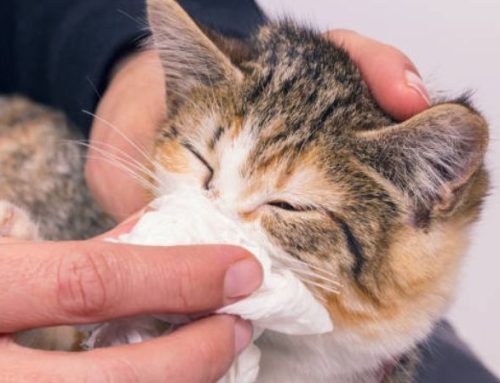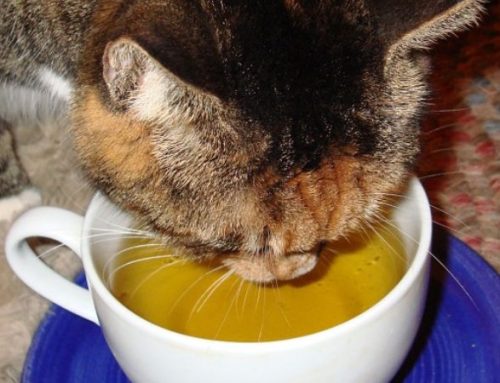If you’ve ever wondered how to tell whether your cat’s expecting, one of the earliest and most fascinating clues lies in her nipples. Subtle changes in color, size, and shape can reveal far more than you might think! In this week-by-week guide, Nexus Pets walks you through the incredible transformation your cat’s body undergoes during the first five weeks of pregnancy helping you spot every sign of new life developing right beneath her fur.
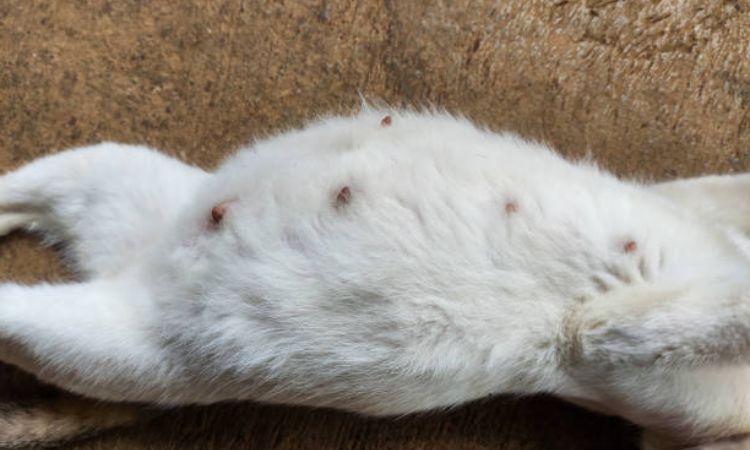
How to Spot Early Pregnant Cat Nipples
Recognizing the earliest signs of pregnancy in your cat can help you prepare for the arrival of kittens. One of the first indicators is a change in the nipples, often noticeable within the first three weeks after conception.
Normal vs. Pregnant: What Non-Pregnant Nipples Look Like
In non-pregnant cats, nipples are small, flat, and pale, usually hidden beneath fur. You might only see a tiny hairless ring around them. These subtle, understated nipples are perfectly normal in both female and male cats, and they remain dormant unless stimulated by pregnancy or nursing.
The Pinking Up Phenomenon (Week 1)
Around 15 to 21 days into pregnancy, cat nipples start to “pink up” a subtle but distinct color change from pale pink or white to a rosier hue. This early transformation is often missed by cat owners, but it’s one of the first visible signs that your queen is expecting. Observing 1 week pregnant cat nipples can give you a head start in recognizing early pregnancy.
Textural Changes
Along with color changes, the nipple area may become slightly firmer or more prominent to the touch. This is due to the mammary glands beginning to prepare for lactation. While still small compared to fully developed nipples later in pregnancy, these early changes are a clear signal that your cat’s body is getting ready to nourish her kittens.
By paying close attention to these subtle signs color shift, prominence, and firmness you can confidently identify early pregnancy and provide the care your cat needs in these first critical weeks.
Pregnant Cat Nipples Week by Week
Week 1: Subtle Signs with 1 Week Pregnant Cat Nipples
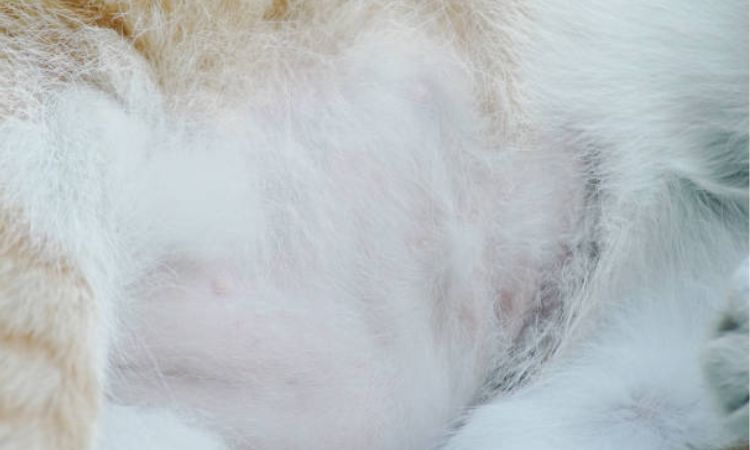
During the very first week of pregnancy, changes in your cat’s nipples are almost entirely internal and may be imperceptible to the naked eye. At this stage, the embryos are microscopic, and the body has only just begun hormonal preparation for pregnancy. The nipples themselves may feel slightly firmer than usual, and some owners may notice a faint shift in color, although it is subtle. Often, the first changes occur in the nipples closest to the hind legs, which may start to “pink up” slightly before the others. This early development is a sign that the mammary tissue is responding to rising levels of estrogen and progesterone in preparation for supporting future kittens. While these alterations are minimal, careful observation can provide an early indication of pregnancy before other physical signs, such as abdominal swelling, become apparent.
Actionable Tip: Focus on gently inspecting the nipples nearest the hind legs, as they are usually the first to change color. Avoid excessive touching, as undue pressure can be uncomfortable for your cat.
Week 2: Increased Pigmentation and Palpability

By the second week, the transformation of your cat’s nipples becomes a little more pronounced. The areola the area of skin surrounding each nipple—begins to swell slightly, creating a subtle but detectable roundness. The coloration, initially just a faint rosy hue, develops into a more noticeable pink or light red, making the nipples easier to differentiate from the surrounding fur and skin. While the enlargement is still modest, the tissue may feel a touch more palpable under gentle observation. These changes indicate that your cat’s body is actively preparing the mammary glands for lactation, with blood flow increasing to support tissue growth and eventual milk production.
Observation Tip: Monitor the nipples for consistent color and slight firmness changes over several days. This early pigmentation provides a reliable visual cue for owners tracking pregnancy progress.
Content you may be interested in: What do male cat nipples look like
Week 3: Clear Identification: What to Expect with 3 Week Pregnant Cat Nipples
Around week three, the changes in your cat’s nipples become unmistakable and are usually the first visually confirmable signs of pregnancy. The nipples enlarge noticeably, standing out distinctly from the surrounding skin, and their color intensifies into a deeper pink or reddish hue. In cats with darker fur, the contrast may appear even more pronounced, making this week a key turning point for visual observation. The surrounding hairless skin patch also begins to expand slightly, highlighting the mammary area further.
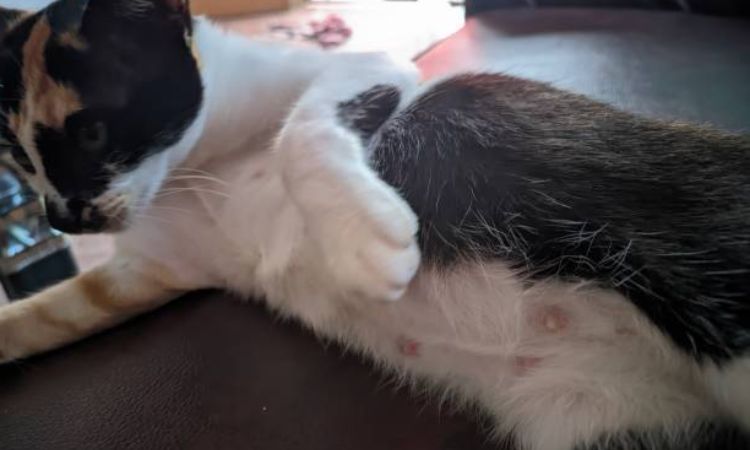
At this stage, a veterinarian could palpate the abdomen and feel the developing embryos, although this should not be attempted at home due to the risk of harming the pregnancy. The increased visibility and firmness of the nipples indicate that the mammary glands are preparing for the next stage of rapid growth and colostrum production.
Actionable Tip: Use week three as a milestone to start documenting visual changes. Take photos to compare with subsequent weeks, which can be helpful for tracking healthy development and sharing with your vet.
Week 4: Rapid Growth and Pre-Lactation Prep
Entering the fourth week, your cat’s nipples begin a period of accelerated growth, preparing the body for milk production. The nipples protrude more prominently and may feel taut to the touch, while the surrounding skin continues to expand. This stage marks a critical transition as the mammary tissue develops in earnest, and the areola may become slightly darker, further emphasizing the nipple area. Behavioral changes may also become more apparent, with your cat showing mild nesting instincts or increased affection as a response to hormonal shifts.
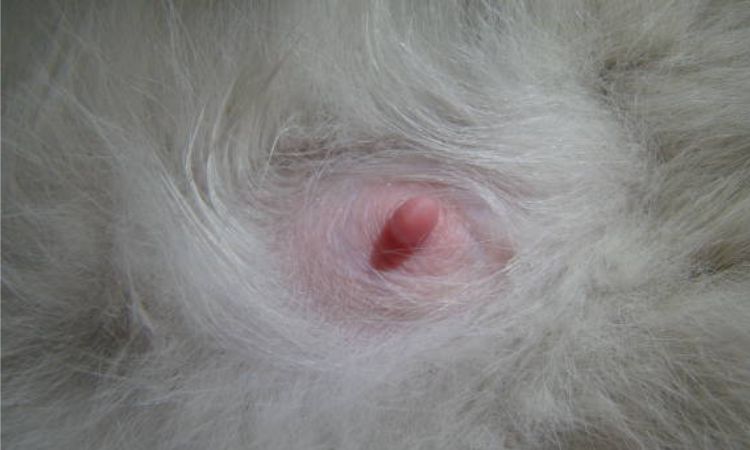
By the end of this week, the nipples are visually distinct and have gained considerable size compared to the early weeks. These physical transformations reflect the cat’s body efficiently mobilizing resources for the nutritional needs of her future kittens.
Week 5: Maximum Development and The Look of 5 Week Pregnant Cat Nipples
By week five, your cat’s nipples have reached near full size for the mid-pregnancy period, appearing round, firm, and highly prominent. The areola is well-defined, and the surrounding skin may remain hairless, highlighting the nipples’ importance in the forthcoming lactation phase. While rare at this stage, a very slight, clear, or straw-colored discharge early colostrum may begin to form in preparation for nursing, although full lactation usually does not occur until the last weeks of gestation.
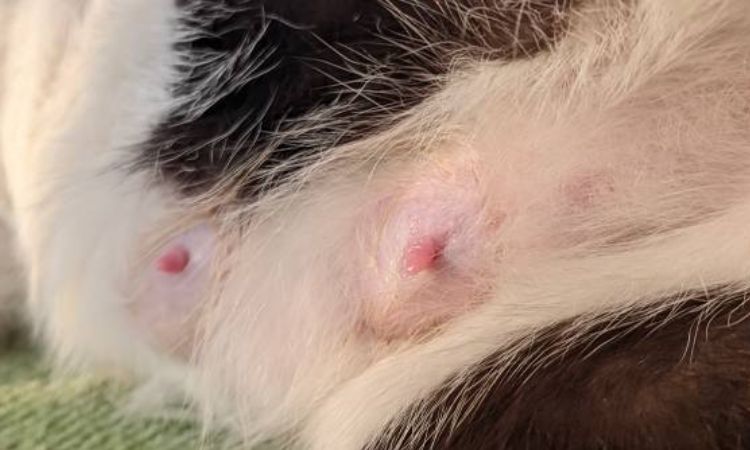
Compared to week three, the growth is dramatic: the nipples are larger, the pink/red coloration is more intense, and the skin surrounding the nipples is tauter and more visible. These changes serve as a clear visual cue for owners that the pregnancy is progressing normally and that the mammary glands are functioning optimally.
Observation Tip: Continue weekly documentation through photos and gentle observation to track growth. By noting the differences between week three and week five, you can see the clear progression toward pre-lactation readiness.
What Else Could It Be? Differentiating Symptoms
While changes in a cat’s nipples are often a clear indicator of pregnancy, it’s important to recognize that similar physical signs can occur under different conditions. Understanding these possibilities ensures that cat owners can accurately interpret what they see and provide appropriate care.
False Pregnancy (Pseudopregnancy)
False pregnancy, also known as pseudopregnancy, is a condition in which a female cat’s body exhibits the physical and hormonal signs of pregnancy despite not carrying any kittens. In this scenario, the nipples may “pink up,” swell, and even develop mild engorgement, mimicking early pregnancy changes. Some cats may also exhibit nesting behaviors, increased affection, or mild appetite changes. Pseudopregnancy typically resolves on its own within a few weeks, but monitoring the cat for any unusual symptoms is advised. Consulting a veterinarian can help confirm whether your cat is genuinely pregnant or experiencing a false pregnancy, especially if behavioral and physical signs appear without mating.
Heat Cycles
Female cats in estrus, or heat, can also display subtle nipple changes due to the surge of reproductive hormones. While not as pronounced as pregnancy, the nipples may become slightly firmer, slightly pinker, or more sensitive during this period. Behavioral changes often accompany these hormonal shifts, such as increased vocalization, rolling, or seeking attention. Unlike true pregnancy, these changes are temporary and will subside once the heat cycle ends. Awareness of your cat’s reproductive cycle can help distinguish between hormonal changes and early pregnancy indicators.
When to Worry
Although nipple changes are usually harmless signs of pregnancy or hormonal activity, certain symptoms may indicate a serious problem requiring immediate veterinary attention. Infection of the mammary glands, or mastitis, can cause nipples to become hot, painful, swollen, or discolored, often appearing dark blue, purple, or unusually red. Affected cats may show signs of discomfort, lethargy, or reduced appetite. Mastitis can progress quickly and compromise both the mother’s health and her ability to nurse kittens if left untreated. Prompt evaluation by a veterinarian is essential to ensure proper diagnosis and treatment, which may include antibiotics or other medical interventions.
Tracking your cat’s nipples from week one to five highlights the key changes of early pregnancy, from subtle pinking to noticeable enlargement and pre-lactation signs. Observing these developments helps confirm pregnancy, distinguish normal changes from false pregnancy or hormonal effects, and ensures your cat receives proper care and nutrition as she prepares for her kittens.


